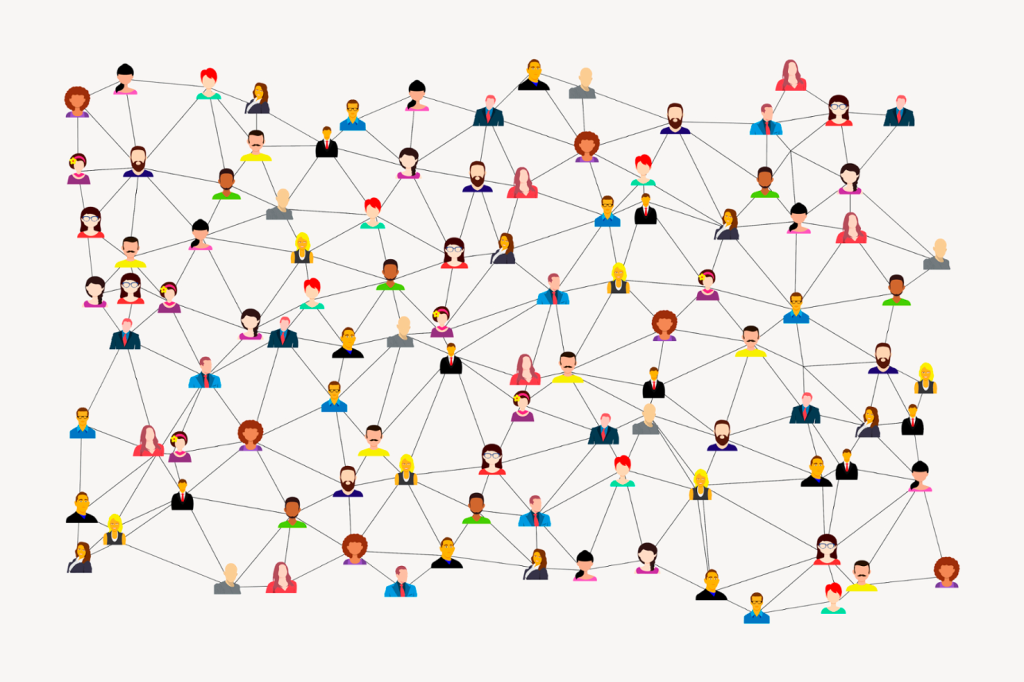Is Information a Form of Aid? Communication in Humanitarian Interventions
TMS PEACE JOURNALISM, 11 Dec 2023
Dr. Valentina Baú | Peace News - TRANSCEND Media Service
In the immediate aftermath of a disaster, communication takes on a very important role as affected communities are in need of critical information. As the International Federation of the Red Cross and Red Crescent Societies reminded us, information at times of crisis is a form of aid. However, this key aspect of communication has long been unrecognised by humanitarian actors. Crisis-affected communities’ need for information is parallel to their need for water, medicine and shelter.
Yet, organisations operating in these realities still need to strike a balance between collecting information for themselves, and exchanging this with those they are trying to support. In order to plan for humanitarian and peacebuilding interventions that include the involvement of the most vulnerable groups, agencies must establish accurate information on the needs of communities affected by a crisis by communicating with them effectively. As a result, organisations involved in crisis response are now trying to learn more on the use of communication in their work, and they have started to look at communication as a critical component of their programming, as much as other elements that make an intervention both viable and successful.
In the context of disasters, the communication approach that is being adopted by humanitarian actors has come to be known as Communicating with Communities (CwC). In a 2014 report, the International Organisation for Migration has defined CwC as ‘a tool to address the information gap so that communities [can] make meaningful and informed decisions about their situation and be aware of their options for the future’ (p.2).
This approach seeks to not only find avenues to communicate effectively with those affected by a crisis, but also to establish a two-way flow of information between communities and humanitarian agencies. What is critical, in this scenario, is to understand how affected communities relate to the media to fulfil their information and communication needs. This can be achieved through an analysis of the information ecosystem of a specific location, which allows us to not only see the communication landscape of that area, but also to understand how aid organisations can directly or indirectly shape it. NGO Internews provides useful guidance on mapping information ecosystems to provide communities with the right type of support.
Shaping current information ecosystems typically relies on the interplay of technology, traditional platforms and word of mouth. Agencies look primarily for simple and inexpensive ways of providing information through media such as text messages, bulletin boards, printed banners, feedback boxes or even the distribution of wind-up radios.
Depending on the technological capacity of the context, real-time message applications such as WhatsApp and social media such as Facebook can also be important platforms to utilise. In order to make available feedback channels known to communities, aid organisations use ordinary materials such as leaflets and posters, but also call-out functions from their call centres and community radio broadcasts.
Another key step involves identifying trusted channels among the local media, local religious networks and civil society groups. At the same time, social media is now serving a number of different purposes in emergencies: one is to create new ways for communities to organise and address their information needs through a new humanitarian approach that places people at the centre. This is thanks to the ability of these channels to establish a two-way communication that enables collective problem solving and make the voice of local communities heard. Another purpose is to serve as alternative communication platforms for affected groups to stay up-to-date with what is happening at the local and national level, as well as to inform those in their network.
Lastly, when aid agencies and media outlets find ways to collaborate, the overall humanitarian effort benefits from smoother coordination and improved delivery. One of the crucial roles that the media play in times of crisis is providing response-related information.
This involves informing the public about the risks people face in that particular social and political context and how to reduce the level of danger: messages related to the location of shelters, medical facilities, places to avoid or how to access water are essential in these circumstances. Through the dissemination of these messages, the media directly supports humanitarian responders and strengthens response efforts that aim to minimise harm.
________________________________________________
Dr. Valentina Baú expands more on this article in her book chapter Re-designing the Media in Humanitarian Interventions: Communicating with Communities at Times of Crisis, and in her blog post Communicating with Communities during Conflict: “mediated” avenues to inform those in needs.
 Dr. Valentina Baú works as a Senior Research Fellow at Western Sydney University, Institute for Culture and Society. Her work focuses on the use of communication for development (C4D) in both peacebuilding and humanitarian contexts. Valentina has worked in different African countries, Asia, and the Middle East. She has collaborated with international NGOs, UN agencies and the Italian Development Cooperation, both in a research and communication capacity. Her experience involves the implementation of both research and media projects with victims and perpetrators of conflict, displaced people, refugees and people living in extreme poverty. You can find out more about her work here.
Dr. Valentina Baú works as a Senior Research Fellow at Western Sydney University, Institute for Culture and Society. Her work focuses on the use of communication for development (C4D) in both peacebuilding and humanitarian contexts. Valentina has worked in different African countries, Asia, and the Middle East. She has collaborated with international NGOs, UN agencies and the Italian Development Cooperation, both in a research and communication capacity. Her experience involves the implementation of both research and media projects with victims and perpetrators of conflict, displaced people, refugees and people living in extreme poverty. You can find out more about her work here.
Go to Original – peacenews.com
Tags: Communication, Crisis, Freedom of information, Peace Journalism, Telecommunication
DISCLAIMER: The statements, views and opinions expressed in pieces republished here are solely those of the authors and do not necessarily represent those of TMS. In accordance with title 17 U.S.C. section 107, this material is distributed without profit to those who have expressed a prior interest in receiving the included information for research and educational purposes. TMS has no affiliation whatsoever with the originator of this article nor is TMS endorsed or sponsored by the originator. “GO TO ORIGINAL” links are provided as a convenience to our readers and allow for verification of authenticity. However, as originating pages are often updated by their originating host sites, the versions posted may not match the versions our readers view when clicking the “GO TO ORIGINAL” links. This site contains copyrighted material the use of which has not always been specifically authorized by the copyright owner. We are making such material available in our efforts to advance understanding of environmental, political, human rights, economic, democracy, scientific, and social justice issues, etc. We believe this constitutes a ‘fair use’ of any such copyrighted material as provided for in section 107 of the US Copyright Law. In accordance with Title 17 U.S.C. Section 107, the material on this site is distributed without profit to those who have expressed a prior interest in receiving the included information for research and educational purposes. For more information go to: http://www.law.cornell.edu/uscode/17/107.shtml. If you wish to use copyrighted material from this site for purposes of your own that go beyond ‘fair use’, you must obtain permission from the copyright owner.
Read more
Click here to go to the current weekly digest or pick another article:
TMS PEACE JOURNALISM:

